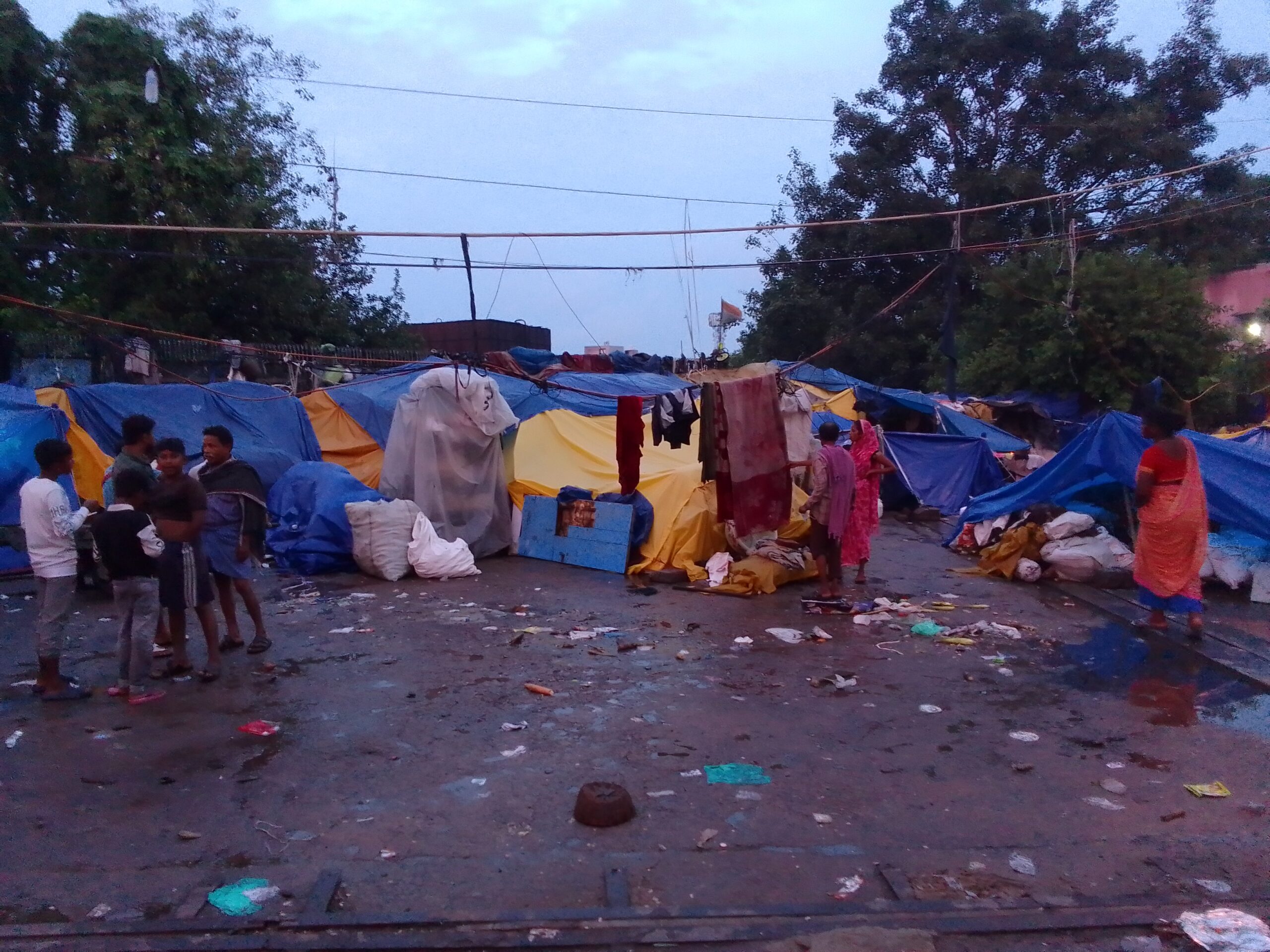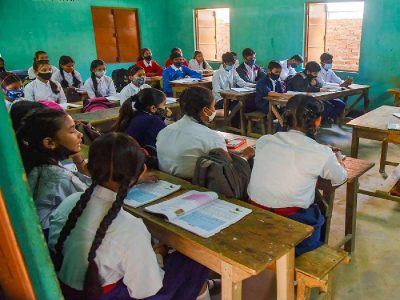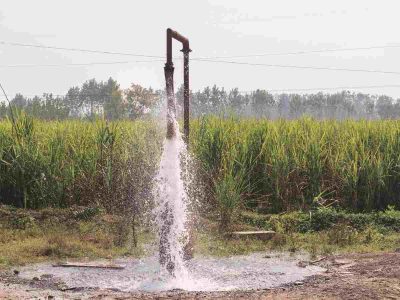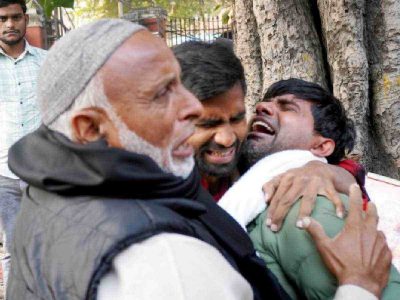The start of monsoon has caused mayhem in north India and not surprisingly, the national capital has also been affected. On July 13, the water of Yamuna crossed the danger level and reached 208.48 metres, breaching the all-time record of 207.49 metres in 1978. Section 144 has been imposed in Delhi’s flood-prone areas.
While heavy rainfall — Delhi witnessed highest 24-hour rainfall since 1982 on July 9 — has adversely affected everyone, since it left even areas frequented by the upper middle-class like Connaught Place flooded, the most affected remain the underprivileged living in slums and Yamuna Khadar of ITO, Golden Jubilee Park, Moolchand Basti and Kashmiri Gate.
“No one wants to solve the problem — neither the government nor politicians. We have been living here since 1913. I was born here.
When our area was flooded, we went on the flyover and lived on the side of the road, under a temporary polythene tent. Ghutno tak paani aa jata hai (The water rises till our knees). We lost some belongings and also lost standing crops in our agricultural land,” Roop Narayan, 65, who lives near the floodplains under the Geeta Colony flyover, told Patriot.
He, along with two sons and many others, are living here after Delhi Development Authority (DDA) demolished their homes at Yamuna Khadar due to the upcoming G-20 Summit. His belongings lay scattered nearby.
“Around three months ago, DDA demolished our homes and captured our agriculture land (indicating it by fingers). They did not give any compensation. So, my sons are forced to work as labourers [to survive]. However, till now, no authority has come to alert us, but we remain vigilant. The children, who study in a government school in Daryaganj, are also not able to go to school due to rain,” Roopnarayan reveals further, with a Hindi daily in his hands.
Aasha Devi, 45, is also one among the approximately thousands who have lived on the Yamuna floodplains across the city for around a century and mainly survived through agriculture before DDA captured their land and demolished many homes over the past six months.
Now, they are living under a polythene tent and may have to vacate this too if the river level rises further.
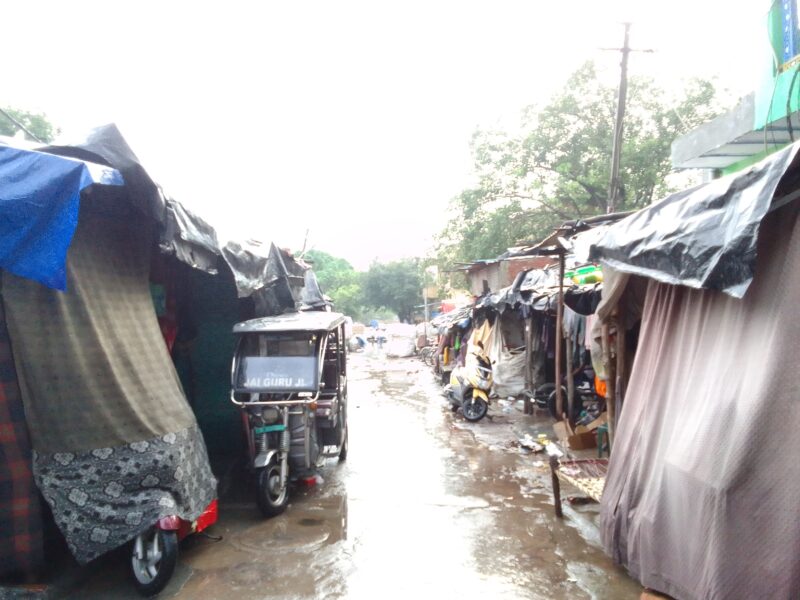
“We are living in fear of floods. At the time of floods, we go to the [nearby] flyover and live there for over a month until the water level decreases. During that time, we get no help from the authorities with food and water. We had our home and land but DDA demolished it. Even recently, the authorities came and tore our temporary polythene tents.
They want to expel us but we will not go anywhere. In the rain, the polythene leaks so we are unable to sleep properly,” Asha, who has been living in the Jubilee Park area of Yamuna Khadar, said.
While Patriot was visiting, a police patrol jeep visited but stayed at a distance before returning without doing anything.
Sharda, 60, who has been living in Yamuna Khadar beneath the open sky with her three children, has a similar story to tell.
She had barely settled down before rains started lashing. She admitted that there is no solution to the problems.
Lokesh is also thinking of vacating his gaushala from the Yamuna Khadar area near ITO.
“I have had a gaushala for the last seven years. A policeman came and asked me to vacate the place because the level of the river is rising. So tomorrow, I will vacate and send my eight cows and two buffaloes to a safer place.”
Leaking roofs
But even those who have roof over their heads in slums aren’t safe.
Reshma Koli lives in a slum with 9-10 members of her family in Zaman Bazar area of Kashmiri Gate, ISBT.

“During rains, our roofs leak and we have to search for dry corners in the house. Today, we spent the entire day trying to stop water leaking from the roof and cover it properly. We couldn’t sleep at night. We also had to manage a tub, jug and bucket to collect water falling on the floor,” she said, indicating towards a jug.
Sadanand Bin, a 35-year-old, sells pulses in the mithai bazaar and lives in a polythene tent above the railway flyover at Peeli Kothi Naya Bazaar along with 40 other families. Rain has impacted his life and business too.
“The pulses have got wet in the rain, despite the fact that I took care and tried to save them. I manage my tent very carefully but sometimes water enters, making it a big problem,” the Bihar native told Patriot.
Moolchand Basti near Geeta Colony flyover was also demolished by the Delhi Development Authority due to G-20 summit. Everything, from kids to cattle, is facing massive problems due to heavy rains. They are barely surviving.
When Patriot visited, Nandu and two other family members were trying to mend a temporary shelter which was leaking in the rain.
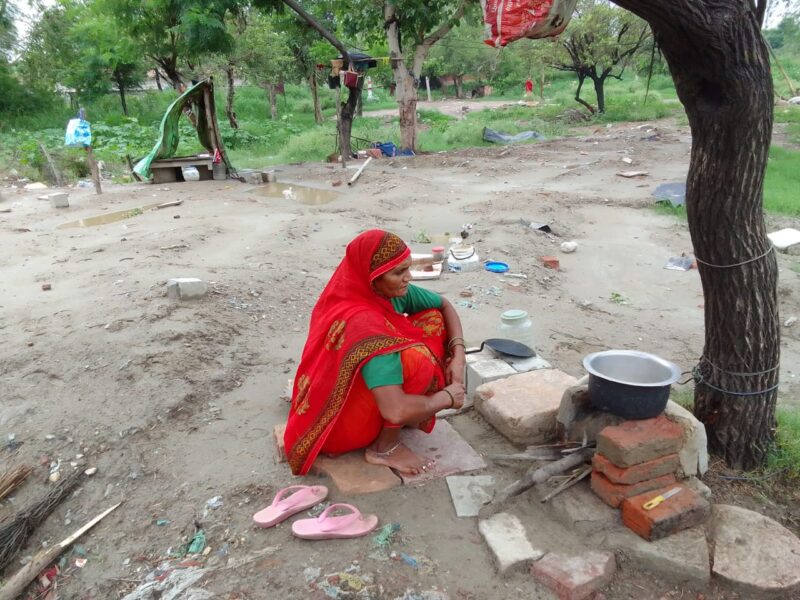
Randheer, who also lives in a polythene tent with his family, said, “Our clothes and other belongings have been drenched [in rain]. We are unable to even cook properly. We have no toilet, so we have to go out and defecate in the open even though it is raining. This government is fully responsible. We are living in conditions which are worse than those of cattle.”
Blues for the big market
While those living on the margins have been affected the most, businesses have also suffered. Shopkeepers saw a drastic decline in business due to lack of customers.
Chandni Chowk, the busiest and oldest market in Delhi with a daily footfall of 5-6 lakh people, saw a decline in visitors despite the area being safe from flooding.
Sanjay Bhargav, chairman of Chandni Chowk Traders’ Association, said, “There has been no waterlogging in Chandni Chowk due to the renovation done here. But because there is problem in other areas, our business has been impacted since customers cannot reach here.” Bhargav blamed the government for lack of a concrete plan and action to solve crises such as these.
“Actually, the government doesn’t have a concrete plan to solve problems. They will be active for three-four days. After that, no one will think about it. The story gets repeated every year.”
Measures Taken
Patriot contacted the municipal corporation offices regarding the initiatives taken to avoid flooding of areas.
D Karthikeyan, Director (public relations) of New Delhi Municipal Council (NDMC) told Patriot, “NDMC has set up six control room from June 15 to October 31 along with the facilitation of duty officers, manpower, T&P i.e. trucks, tools, portable pumps round the clock for prevention of any water-logging during heavy rain. Pump operators and other staff/manpower will be available 24X7.” He further added that NDMC has already identified five vulnerable points of stagnation of water during heavy downpour. These are Africa Avenue, Baba Kharak Singh Marg, Panchkuian Road, Purana Quila Road and Lodhi Estate. Permanent pumps already exist in these places helping avoid water-logging in adjoining areas during heavy downpour in monsoon period.
“Six control rooms have been set up at Sangli Mess, Khan Market, Netaji Nagar, Malcha Marg, Mandir Ma r g a n d Ha n u m a n Ro a d (Drainage Service Centres) in NDMC area to avoid water-logging,” he added.
According to him, the total catchment area of NDMC is 42.74 sq. km.
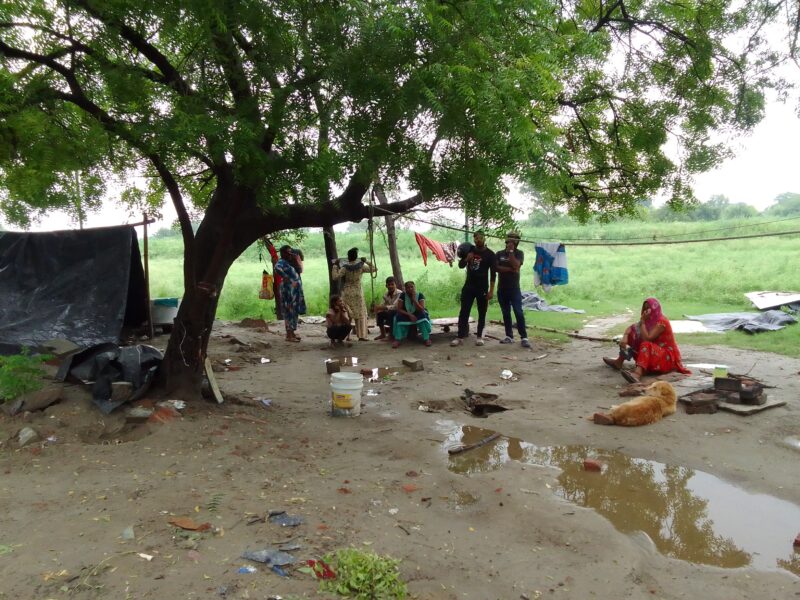
“There is an open Khushak Nalla of a length of 3 km. There are 14 drainage systems across the NDMC area. The length of main drainage system is 53.41 km. The length of transverse drainage lane is 270.82 km. Total numbers of manholes are 9,142 and bell moth and GTs (gully trap/chambers) are 15,761 in the NDMC area.” However, the municipal office did not talk about the initiatives taken to solve the problems in areas where the vulnerable section of the society lives.
Expert View
Devashish Dhar, urban planner and a former public policy specialist at NITI Aayog, says that the devil lies in planning.
“It is not like that. It is a new phenomenon. Secondly, Delhi is not the only city which is suffering from this. Our masterplans, our regional plans, focus largely on the built-up area. We focus on what would be the residential area, what would be the commercial area. That way, we tend to forget the natural ecosystem like the urban water bodies,” said Dhar.
“Even if we have planned for waterlogging, it does not get implemented because of the encroachment around the water floodplains, around wetlands.”
Another issue, he adds, is the absence of a strong water drainage system because people don’t see it as part of infrastructure. (With inputs from Tej Prakash Bhardwaj)

